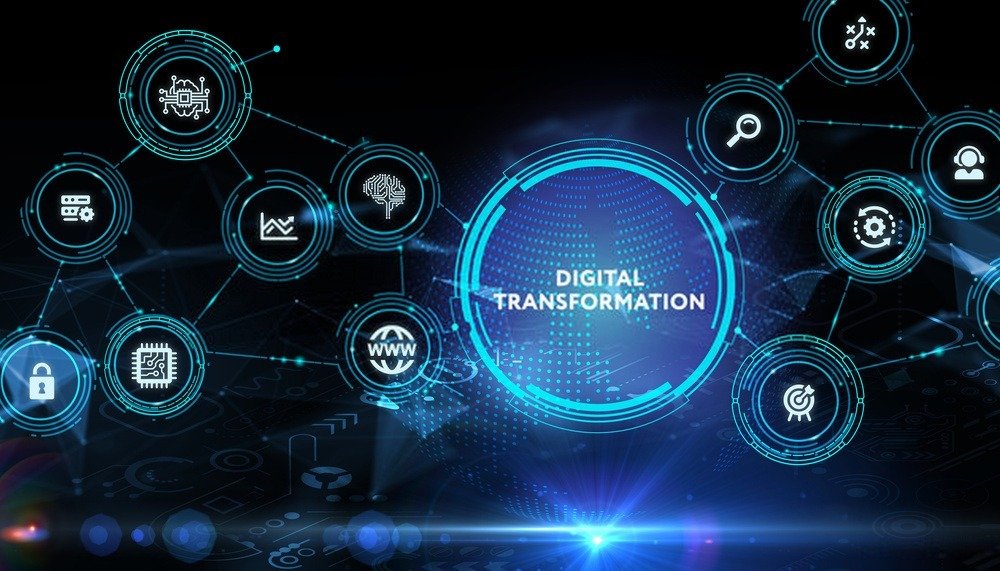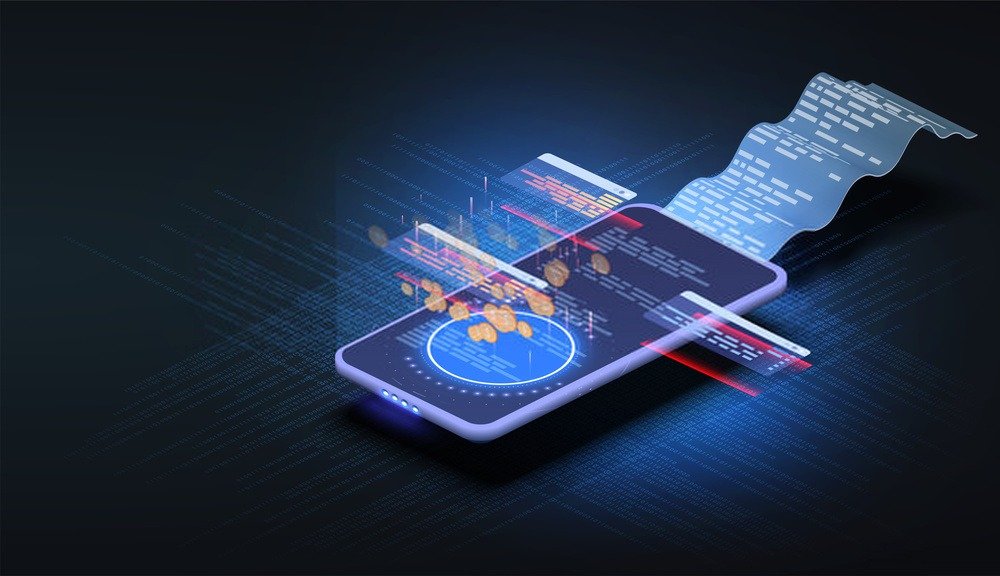Companies that successfully transition from traditional maintenance management processes to digitalized processes consistently see extremely favorable results. In this article, we will present several advantages directly inherited from the implementation of the latest generation CMMS software.
What is digital transformation?
The digital age began more than 50 years ago. The digital revolution, also known as the third industrial revolution, corresponding to the transition from analog mechanical and electronic technology to digital electronics.

Begun in the second half of the 20th century, this digital revolution really accelerated in the 1970s and 1980s with the introduction of digital memory storage devices and the reduction in their size according to the deadlines identified in Moore's law : increase in digital transaction capacity by 100% every 18 months.
This has led to an astonishing transformation of all facets of modern life, both from a private and professional point of view. This phenomenon also has a very strong tendency to run away, but that is another subject that we will address later.
Digital transformation allows organizations to automate and digitize manual administrative processes, freeing people to focus on new, higher-value activities.
What are the stages of a digital transformation?
We can distinguish 4 stages in the evolution of an organization:
- Stage 1 – Significantly behind in digital transformation
- Stage 2 – Beginning requirements development and emerging organizational willingness to implement
- Stage 3 – Software solutions are in place and improving business outcomes
- Stage 4 – This is the automation stage: the company's employees collaborate 100% digitally. A large part of communication with customers and partners is also digitalized
How does digital transformation take place within a company?

Of course, there is no single digital transformation. There are many distinct areas within an organization, and while they can all benefit from better tools, the process doesn't happen at the same pace and at the same time across departments.
For example, organizations may invest in cutting-edge mobile technology, but not change the way they manage inventory. They can automate technician route planning while still using paper worksheets. Let us study, through several use cases, the benefits of digitalization.
CMMS: the benefits of digital
By the way, what does CMMS mean? A CMMS, which is the acronym for Computer Aided Maintenance Management, is software that records all information relating to the maintenance of technical equipment and supports users in their operations.
Time between the completion of an intervention and its invoicing

This is the time it takes to invoice a customer for maintenance carried out on their behalf, once it is completed. In organizations that have not implemented digital transformation, this delay can range from several days to 2 or 5 weeks.
An advanced maintenance provider in its digital transition is capable of invoicing the same day. It succeeds because all the information necessary for invoicing is collected in real time during the intervention, the professional invoice of the customer is created automatically, a digital signature is collected on site, then all this is shared in real time through the mobile application and integrated into an ERP system for immediate invoicing.
This makes it possible to considerably reduce the period of recovery of claims, to simplify the entire process of settling accounts, to reduce the workload of administrative staff and to release enormous liquidity.
This liquidity is now available earlier to pay commissions, bonuses, marketing, salaries, in short to be put to the service of the organization in order to earn more money more quickly.
This article might interest you: How to make an electronic signature on Outlook?
Technician efficiency
With a mobile application for field maintenance management, the technician no longer has to complete work orders, manuals to carry, parts order forms to submit, maps to consult – all the information needed he needs are at his fingertips.
The mobile device tells them where and when the next service is needed, the best way to get there, what parts they're likely to need, as well as manuals and technical information, all in digital, up-to-date form. and on demand.

Additionally, the device may have the ability to display videos of maintenance tasks, provide augmented reality guided maintenance sessions, tutorials, and allow the technician to phone a friend and activate support Level 2 remote with audio and video capability.
If we take into account the time that technicians in less innovative organizations spend doing administrative tasks – finding information, ordering parts, finding schematics and cheat sheets – we see an improvement of between 20% and 40% of the use of technicians or engineers. This is a real and effective increase in working time.
This can pave the way for more work to be completed per day, week or month. This can allow more time to be spent with the client developing better and deeper relationships. It can even allow technicians and engineers to focus on additional sales opportunities. In fact, it allows organizations to do much more with the people they currently have, at no additional cost.
Back office efficiency

While digital transformation leads to a marked increase in technician efficiency, this increase directly impacts their back-office counterparts. In less advanced operations, all data that technicians enter on intervention reports, purchase orders, test and inspection reports, etc. must be read, interpreted and entered into ERP systems or old software that does not offer any possibility of collection from the field.
Having to multiply entries and find information manually represents a huge burden for back-office staff. When back-office staff are not busy deciphering paper work orders and entering data, they must be searching the contract database, validating customer information, locating drawings, tracking parts orders or shipments, or even trying to understand billing errors.
In a fully digitalized business, these activities are a thing of the past. All data is entered once, captured, saved and reused when needed.
Contracts and rights are available instantly. Customers have access to their contract history and can view the history of all their transactions themselves. The need and role of back office staff is changing from administrative support staff to a business development machine. We have seen that back office usage has doubled.
The end of unbilled services

The ability to instantly record and replay what is happening across the entire organization is a new possibility once digital transformation has taken place.
Often when we discuss leakage – not charging everything a company is entitled to charge – with companies in the maintenance industry, we find that they know it's happening, but they have no way of capturing these leaks:
You're asking us to quantify something we can't see. Obviously, if we could, we would stop it.
Digital tools allow instant validation of contractual commitments and precise tracking of parts used within the framework of a contract. The ability to accurately measure profitability becomes very easy.
We are seeing some companies see a 15-20% reduction in leaks due to the inability to validate contracts and/or properly track the use of spare parts.
A mode of continuous improvement
Embarking on a digital transformation leads to significant improvements in operational performance, resulting in enormous financial benefits for asset and equipment maintenance services companies.
Removing non-value-added tasks allows your teams to focus on their customers, fix equipment right the first time, find additional revenue streams, and ensure you can charge everything you need to charge – without leaving money on the table.
There is no END word to digital transformation . It is a process that will continue to evolve, progress and expand. Companies which, for one reason or another, have not taken advantage of it, will find themselves further and further behind their competitors in terms of profitability and competitiveness and will inevitably disappear.
Conclusion
Companies that successfully transition from traditional, manual processes to 100% digital processes see significant improvements in operational performance, resulting in enormous financial benefits.
By removing tedious tasks, your teams can focus on their customers, fix equipment right the first time, find additional revenue streams, and ensure you can charge everything you need to charge.




